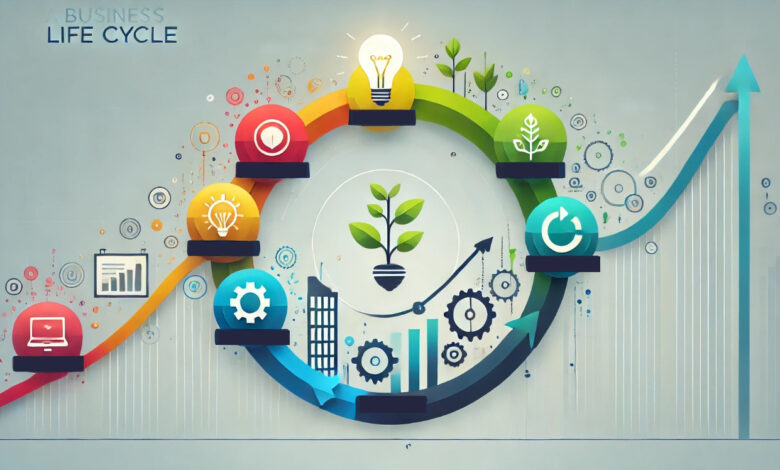The Business Life Cycle 7 Stages Explained

Introduction to the Business Life Cycle
Every business goes through a journey from the moment it is created. This journey is called the business life cycle. It shows the different stages a company experiences as it grows, develops, and adapts to challenges.
The business life cycle has seven main stages that include starting, growing, and sometimes even facing decline. Understanding these stages is important for business owners and leaders to make smart decisions at the right time. Let us explore each stage and what it means for a business.
Seed Stage When the Idea Begins
The seed stage is the very beginning of a business. It is when someone comes up with an idea and starts planning how to turn it into reality.
At this stage, entrepreneurs ask important questions. They want to know if their idea will work and who their customers might be. Business plans are written, and funding is often needed to get started. This stage is all about preparing and laying the groundwork for a successful business.
Start-Up Stage Launching the Business
The start-up stage is when the business officially begins. Products or services are introduced to the market, and the company starts attracting its first customers.
This stage is exciting but also full of challenges. Businesses often face unexpected problems, like figuring out how to attract enough customers or managing early expenses. Success during this stage depends on adaptability and building a strong foundation for growth.
Growth Stage Expanding the Business
The growth stage is when a business starts to expand. More customers are interested in the products or services, and revenue begins to increase.
In this stage, businesses might hire more employees or open new locations. They focus on scaling operations while ensuring quality and customer satisfaction. This is a positive stage, but careful management is needed to avoid growing too fast or running into financial problems.
Establishment Stage Achieving Stability
The establishment stage is when the business becomes stable. It has regular customers, steady income, and efficient operations.
At this stage, the focus is on maintaining what has been built and finding ways to improve. Businesses work on keeping their customers happy and staying competitive. It is also a time to explore small improvements that can make the business even better.
Expansion Stage Reaching New Opportunities
The expansion stage is when a business looks for new ways to grow. This might include offering new products, entering different markets, or forming partnerships with other companies.
This stage requires careful planning and smart investments. Businesses often take calculated risks to achieve bigger rewards. The goal is to grow without losing focus on the current operations or existing customers.
Decline Stage Facing Challenges
The decline stage happens when a business starts losing customers, money, or market relevance. This can occur due to strong competition, changes in the industry, or outdated practices.
Businesses in this stage need to act quickly. They might adjust their strategies, improve their products, or reduce costs to recover. If the decline is not addressed, it could lead to the business shutting down.
Renewal or Exit Stage Deciding the Future
The renewal or exit stage is the final stage in the life cycle. A business may choose to renew itself by changing its approach, updating its products, or finding new markets.
If renewal is not possible or desirable, the business might plan an exit. This could mean selling the company, merging with another, or closing down. This stage is about making the best decision for the business and its stakeholders.
Conclusion Understanding the Business Life Cycle
The business life cycle is a helpful guide to understanding how companies grow, change, and adapt. By recognizing the seven stages, businesses can plan for success and respond to challenges.
From the first idea to deciding the future, each stage presents unique opportunities and lessons. Whether you are starting a business or managing one, knowing where you are in the life cycle can help you make smart decisions and achieve long-term success.
FAQs About the Business Life Cycle
What is the business life cycle?
The business life cycle describes the stages a company goes through from its start to its growth, challenges, and eventual transformation.
Why is the business life cycle important?
It helps business owners understand what to expect at each stage and plan strategies to grow and succeed.
What is the most important stage in the life cycle?
The start-up stage is critical because it determines if the business can establish itself and attract customers.
Can a business skip stages in the life cycle?
Most businesses go through all stages, but the time spent in each stage can vary based on the market and industry.
What happens if a business enters decline?
Businesses in decline need to take action quickly to recover, such as improving products or rethinking their strategies.
What is an exit strategy for a business?
An exit strategy is a plan for ending or transferring ownership of the business, such as selling it or merging with another company.



